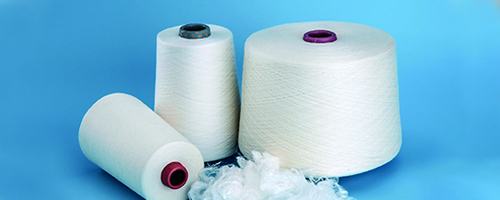-
 Innovative ResearchOur commitment to innovation, advanced research, and cutting-edge technologies enables us to craft fabrics using specialized yarns and develop unique products. Each dyeing formula is meticulously developed in-house to achieve new techniques and effects, utilizing innovative dyes.
Innovative ResearchOur commitment to innovation, advanced research, and cutting-edge technologies enables us to craft fabrics using specialized yarns and develop unique products. Each dyeing formula is meticulously developed in-house to achieve new techniques and effects, utilizing innovative dyes. -
 Continuous StudyState-of-the-art machinery and advanced technologies allow us to achieve exceptional coloration performance, significant energy savings, and a minimal environmental footprint. Every collection features innovative raw materials, weaving techniques, designs, and high-quality specialized yarns.
Continuous StudyState-of-the-art machinery and advanced technologies allow us to achieve exceptional coloration performance, significant energy savings, and a minimal environmental footprint. Every collection features innovative raw materials, weaving techniques, designs, and high-quality specialized yarns. -
 Quality ControlAll our looms are regularly upgraded to ensure we remain at the forefront of technological advancements. By maintaining control over the entire production chain, we can trace every stage of manufacturing, optimize processes, enhance product performance, and ensure quality at every step.
Quality ControlAll our looms are regularly upgraded to ensure we remain at the forefront of technological advancements. By maintaining control over the entire production chain, we can trace every stage of manufacturing, optimize processes, enhance product performance, and ensure quality at every step.
-
 Spinning
SpinningSpinning transforms large quantities of unordered fibers (short fibers) into longer, cohesive units (yarn). Various spinning methods are employed depending on the properties of the fibers and yarn. The goal is to produce high-quality yarn that is smooth, durable, and minimally fuzzy.
-
 Dyeing
DyeingDyeing involves transforming undyed yarn into colored yarn using specialized dyes. Achieving color uniformity requires consideration of dye penetration and stability. The fabric must maintain its original color even after repeated washing.
-
 Weaving
WeavingFollowing spinning and dyeing, weaving interlaces yarn to create fabric. When weft yarn intersects with warp yarn, the fabric is born, embodying the synergy of raw material quality, design creativity, structural precision, and the skill of the weaver.
-
 Finishing
FinishingTextile finishing, also known as "processing," refers to a series of treatments applied to fabric to enhance dyeing performance, printability, hydrophilicity, color, texture, and overall appearance.
If you have any questions, inquiries, or concerns, our highly skilled and dedicated team of He Tai professionals is always at your disposal, ready to offer prompt and reliable assistance and support.


 English
English  中文简体
中文简体 












